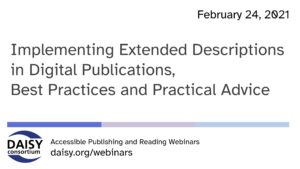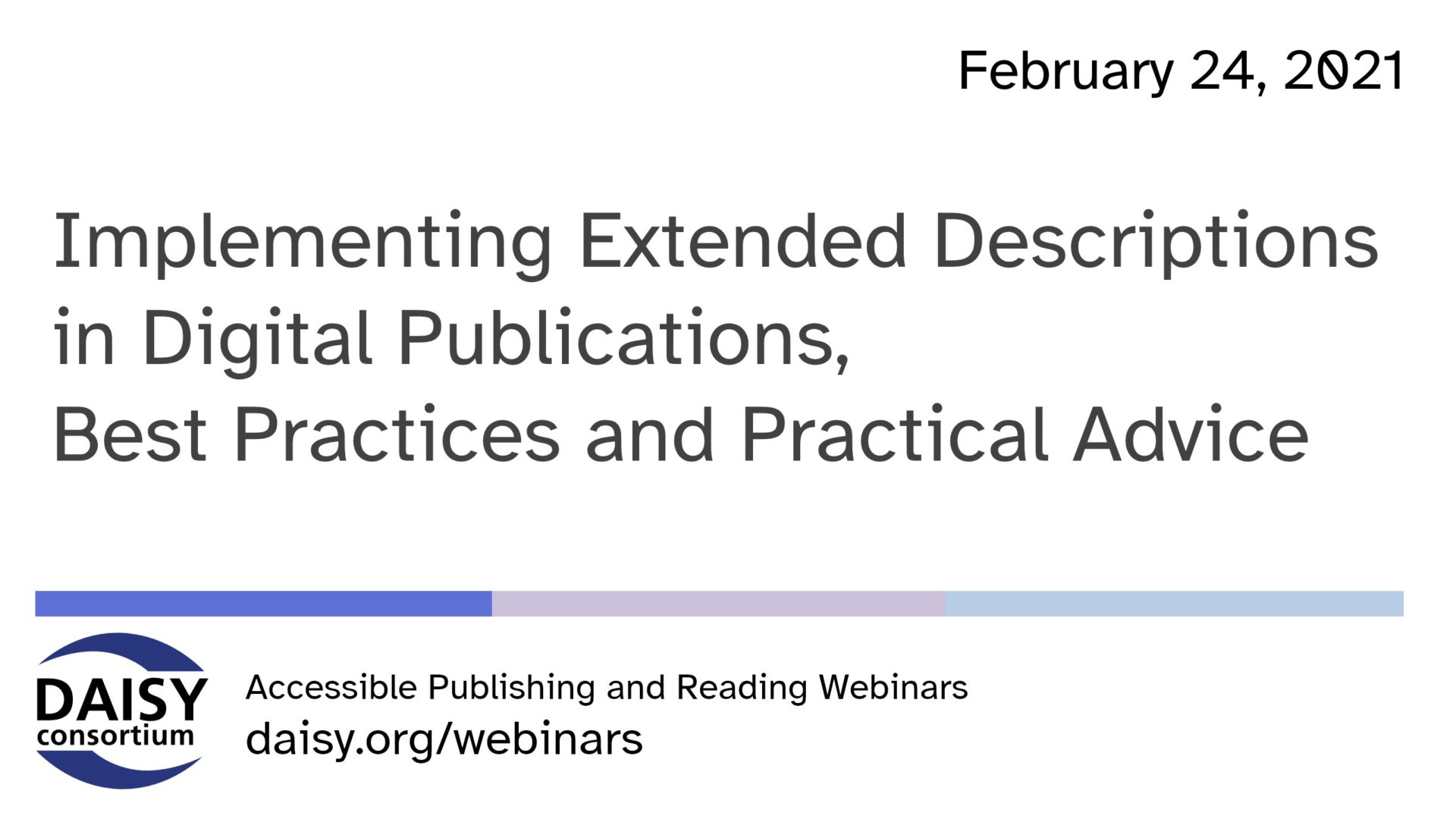Implementing Extended Descriptions in Digital Publications, Best Practices and Practical Advice (W)
 In our series of free weekly webinars February 24th saw a session focused on extended descriptions which followed on nicely from our series on The Art and Science of Image Description. Our speakers were able to give practical advice on what works for them and what is coming up – lots to think about and takeaway!
In our series of free weekly webinars February 24th saw a session focused on extended descriptions which followed on nicely from our series on The Art and Science of Image Description. Our speakers were able to give practical advice on what works for them and what is coming up – lots to think about and takeaway!
This page contains:
Full Video of the Webinar
Speakers
- Richard Orme, The DAISY Consortium—host and chair
- George Kerscher, The DAISY Consortium
- Charles La Pierre, Benetech
- Evan Yamanishi, W.W. Norton and Co
Session Overview
When Alt Text is Not Enough
There are many occasions when the alt text option doesn’t provide enough scope and the addition of an extended description is a necessary inclusion in order to properly convey the meaning of an image or complex graphic. George Kerscher explained to us how extended descriptions can add value to this type of content and add clarity and meaning in a given context.
3 Techniques for Delivery
Comprehensive Description Following the Image
This type of delivery would appear immediately after the image, inline. As it cannot be skipped, these descriptions can interrupt the flow of the page for the reader.
Summary and Expandable Details
This type of description remains hidden until expanded by the reader, revealing the details. It is easy to move past without reading if not required. Unfortunately, some reading apps do not support the “details” element.
Linked Description
This type of description can be accessed by following a link to the end of the book where the image is reproduced and the full extended description can be accessed. Ideally the link will take you back to where you came from originally (a feature that has just been refined) although some assistive technology doesn’t quite get you to the right spot!
George shared with us his own personal preferences. Generally he likes the Summary and Details approach but the linked approach is growing on him! Traditionally his screen reader would take him back to the start rather than where the link was but these “deep linking” issues are improving and he is becoming a fan.
Demos in HTML and EPUB
Charles La Pierre gave a comprehensive demonstration of the various techniques for handling extended descriptions using the browser, Vital Source’s Bookshelf, Apple Books and Thorium. Quite a difference and well worth watching these in the attached video!
Publisher Perspective
Evan Yamanishi spoke to us about how to optimize the use of extended descriptions to enhance the reader’s experience through personalization and progressive enhancement. It is important to give the reader an option to choose how content is displayed to best suit them and the same technique could be used for extended descriptions. At W.W. Norton they prepare and ship content with standard mark up and javascript so that items may be enhanced if the reading system allows. This satisfies most systems but he did note that the underlying semantics of how the markup is prepared has to be standardized. This is vital.
Why Extended Descriptions are Required
George reminded us of conformance requirements in:
- WCAG
- EPUB Accessibility Specification 1.1 where it will be a requirement
- European Accessibility Act which comes into play in 2025
Publishers are indeed using extended descriptions as part of their econtent materials and it has been wonderful to see this happening.

